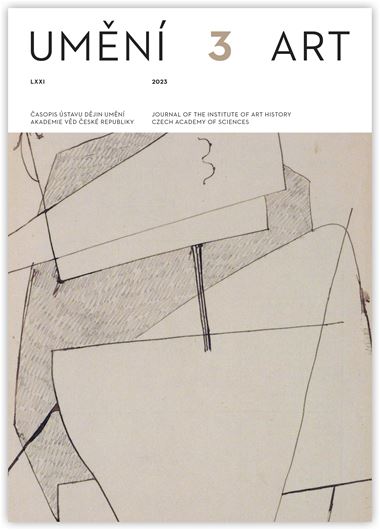Žaneta Marvanová
Confessionality of the Roman Catholic and Protestant Sacral Space in the Peripheries of the State around 1800
In recent years, the confessionality of the sacral space has been an attractive research topic, but attention to the ‘peripheral’ areas of the Habsburg Empire during the period of religious tolerance remains marginal in art history. The question of visual semantics of Roman Catholic parish churches and prayer houses of Lutheran and Calvinist congregations around 1800 in Moravia and Austrian Silesia is, however, legitimate since the sacral space still (or again) represented an emotionally charged space, not only the Protestant space in opposition to that of the Roman Catholic but between those of individual Protestant denominations as well. This situation is most evident in the peripheral areas of the Teschen region, Wallachia, and Vysočina, where secret non-Catholicism was deeply rooted in a specific form and where two or three confessions were thus only just learning to function side by side around 1800. The text traces the main theological and liturgical differences between the Roman Catholic, Augsburg (Lutheran) and Helvetic (Calvinist) confessions, which determined their visual presentation in sanctuaries and furnishings. At the same time, attention is paid to the political and socio-cultural context of the time, as the efforts of Reformed Catholicism and Enlightenment absolutism undeniably limited the expression of Roman Catholic post-Tridentine piety and led to simplification and an emphasis on the clarity of the liturgy and the utilitarianism of the sacral space. Equally crucial was the administrative restructuring, including the building offices, and the unfinished creation of so-called normal plans on the part of the Roman Catholic construction industry and the restriction of Protestant building, for example, by the regulations in the Patent of Toleration. The individual points on the topic of confessionality are finally demonstrated in three case studies.
Author's email:
399298@mail.muni.cz
DOI: HTTPS://DOI.ORG/10.54759/ART-2023-0302
Full-text in the Digital Library of the Czech Academy of Sciences:
https://kramerius.lib.cas.cz/uuid/uuid:a620e189-d948-4b1b-9db9-47179325f2b3
< back

